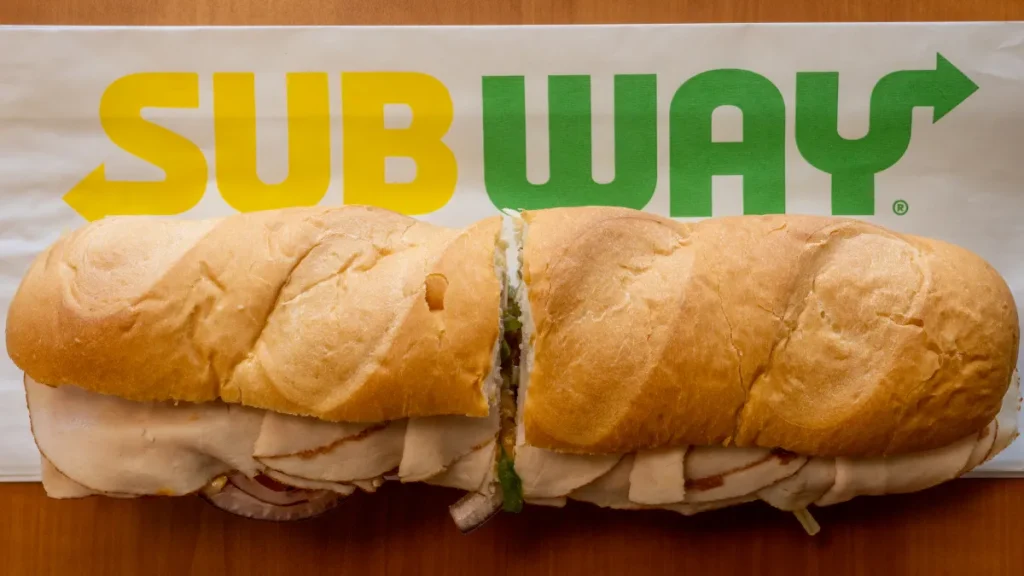Subway, the globally recognized and ubiquitous sandwich fast food franchise, now finds itself ensnared in the ominous web of Lockbit, a ransomware group of global notoriety that has etched its name into the annals of cyber history with this subway breach.
Before we delve further into Subway’s breach, I want to preface this article by saying that 99% of the time when a breach is announced by Lockbit – IT DID HAPPEN, despite what other threatintel companies claim, such as FalconFeeds.io . The rest of this article will talk about the chatter surrounding the subway breach.
Reports emerging from The Register and CyberNews have brought to light a deeply disconcerting revelation: Subway’s name has made an unwelcome appearance on Lockbit’s data leak website this Monday. The ransomware group, unapologetically bold, asserted that one of its affiliates had deftly amassed an extensive trove of sensitive internal company data, a staggering cache amounting to hundreds of gigabytes. This Subway breach, a term now echoing across the cybersecurity landscape, raises an inevitable and unsettling question: Is Subway, the ubiquitous sandwich giant, concealing a substantial data breach that may have far-reaching consequences?

This Subway breach, as revealed by Lockbit, extends its tendrils into the very fabric of Subway’s operations, encapsulating what the ransomware group terms “all financial aspects” critical to the seamless functioning of the company. In a meticulously crafted and strongly-worded blog post, Lockbit has leveled a serious accusation at the sandwich behemoth, suggesting that it is attempting to shroud the true severity of the Subway breach. The scope of this breach, as delineated by Lockbit, is nothing short of comprehensive, covering employee salaries, franchise royalty payments, master franchise commission payments, restaurant turnovers, and more. The Subway breach, as Lockbit asserts, goes beyond the mere compromise of data; it represents a potential exposure of the very financial heartbeat of the franchise.
This Subway breach is not an isolated incident but rather a chapter in the evolving narrative of fast-food chains grappling with the specter of cyber threats. It’s imperative to acknowledge that this is not the first time a major fast-food giant has fallen victim to such attacks. A look back at historical breaches unveils a pattern of devastating consequences. In 2015, Wendy’s suffered a major breach that impacted over 1,000 of its locations. The breach involved malware infiltrating point-of-sale systems, resulting in the compromise of customer payment card information. The fallout from the Wendy’s breach serves as a cautionary tale, highlighting the potential financial and reputational damage that can be inflicted upon a fast-food giant when cybersecurity defenses are breached.
Subway, facing the looming specter of the Subway breach, now confronts a scenario reminiscent of the 2018 incident involving Chipotle. In that case, the fast-food chain fell prey to a point-of-sale malware attack, compromising customer payment card data across several of its locations. The aftermath of the Chipotle breach underscored the tangible impact on customer trust and brand reputation that such incidents can trigger.
The Subway breach, according to Lockbit, isn’t merely a clandestine infiltration; it is a strategic move to pressure the franchise. The ransomware group is, in a rather unconventional move, extending Subway a grace period to address the Subway breach. However, it is crucial to note that this extension is not motivated by altruistic principles but aligns with the typical dynamics of ransomware attacks, allowing the targeted entity, in this case, Subway, a precarious window of opportunity to acquiesce to the demands of the affiliate.
As Lockbit explicitly outlines the timeline, Subway faces a daunting deadline until February 2 to respond before the stolen data from the Subway breach is poised to be unleashed into the public domain. The stakes are undeniably high, with The Register’s estimations, based on LockBit’s historical ransom demands, suggesting that Subway might be coerced into parting with a staggering sum, potentially tens of millions of dollars, to secure the confidentiality of its compromised information.
Curiously, Lockbit has chosen to withhold further details about the alleged Subway breach. The nature of the Subway breach—whether through the deployment of ransomware, exploitation of vulnerabilities, or alternative means of data acquisition—remains shrouded in a veil of uncertainty, adding an extra layer of complexity to an already intricate cybersecurity puzzle.
In response to these grave allegations, a spokesperson from Subway has issued a statement to PCMag, a sibling-site of Mashable, indicating that Subway is actively “exploring the validity of the claim.” The unfolding saga paints a grim and suspenseful picture, leaving Subway with the unenviable task of navigating a potential Subway breach, a formidable adversary in the ever-evolving landscape of cyber threats.

As the term “Subway breach” permeates discussions surrounding cybersecurity, it serves as a stark reminder of the vulnerabilities faced by major fast-food chains. The Subway breach is not an isolated incident; rather, it reflects an escalating trend in cybergangs targeting the very core of these franchises, exposing sensitive financial data and jeopardizing the trust of millions of customers. The Subway breach unfolds against the backdrop of historical breaches in the fast-food industry, underscoring the need for robust cybersecurity measures to shield these giants from the far-reaching consequences of malicious cyber activities. The Subway breach, therefore, serves as a call to action for the broader industry to fortify its defenses against the ever-evolving landscape of cyber threats.
Leave a Reply